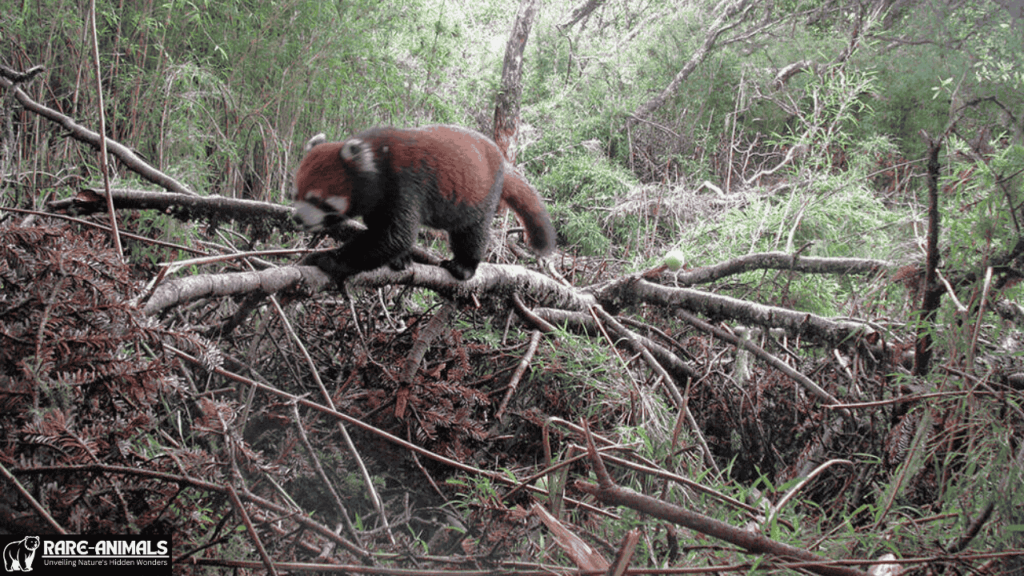Red pandas inhabit one of the most challenging and breathtaking environments on Earth – the high-altitude, temperate forests of the Himalayan region. Their specialized habitat represents a delicate ecosystem that supports these remarkable creatures’ unique way of life.
Geographic Distribution
Primary Habitat Countries
| Country | Estimated Population | Habitat Characteristics |
|---|---|---|
| Nepal | 500-700 individuals | Mountain forests (2,200-4,800m elevation) |
| India | 300-500 individuals | Eastern Himalayan regions |
| Bhutan | 700-1000 individuals | Protected mountain forests |
| China | 3,000-4,000 individuals | Sichuan and Yunnan provinces |
| Myanmar | Limited population | Northern mountainous areas |
Specific Habitat Characteristics
Ecological Parameters
- Elevation Range
- 2,200-4,800 meters above sea level
- Temperate mountain forest zones
- Specific microclimatic conditions
- Forest Composition
- Mixed coniferous and deciduous forests
- Dense bamboo understory
- Multiple tree species for shelter and food
Habitat Requirements
| Habitat Component | Specific Needs |
|---|---|
| Temperature | 10-25°C (50-77°F) |
| Annual Rainfall | 1,000-2,500 mm |
| Humidity | 60-80% |
| Canopy Cover | 50-70% |
| Bamboo Density | High concentration |
Detailed Regional Breakdown
Nepal: Himalayan Heartland
Key Regions:
- Langtang National Park
- Rara National Park
- Annapurna Conservation Area
Characteristics:
- Steep mountainous terrain
- Thick rhododendron forests
- Dense bamboo undergrowth
- Limited human intervention
India: Eastern Himalayan Sanctuary
Key Regions:
- Sikkim
- Arunachal Pradesh
- West Bengal (Darjeeling)
Characteristics:
- Diverse forest ecosystems
- High biodiversity
- Multiple conservation zones
- Complex topographical variations
Bhutan: Conservation Paradise
Key Regions:
- Jigme Dorji National Park
- Phrumsengla National Park
Characteristics:
- Strict environmental protection
- Minimal human disturbance
- Interconnected forest corridors
- High conservation priority
China: Extensive Mountain Ranges
Key Regions:
- Sichuan Province
- Yunnan Province
- Tibet Autonomous Region
Characteristics:
- Vast mountain landscapes
- Diverse forest types
- Significant population clusters
- Established nature reserves
Myanmar: Limited but Crucial Habitat
Key Regions:
- Northern mountainous areas
- Limited forest patches
- Minimal scientific documentation
Habitat Adaptation Strategies
Survival Mechanisms
- Arboreal Lifestyle
- Spend 60-80% of time in trees
- Sleep on tree branches
- Use trees for protection
- Thermal Regulation
- Thick fur adaptation
- Can lower metabolic rate
- Use tail for warmth
- Dietary Specialization
- Bamboo-specific digestive system
- Adapted to forest floor foraging
- Seasonal dietary adjustments

Threats to Habitat
Habitat Destruction Factors
| Threat Category | Impact Level |
|---|---|
| Deforestation | Critical |
| Climate Change | High |
| Human Encroachment | Moderate |
| Infrastructure Development | Significant |
Conservation Efforts
Habitat Protection Strategies
- Protected Areas
- National parks
- Wildlife reserves
- Strict conservation zones
- Community Engagement
- Local conservation programs
- Sustainable forest management
- Economic alternatives to deforestation
Behavioral Adaptations to Habitat
Survival Characteristics
- Solitary nature
- Territorial marking
- Twilight activity patterns
- Exceptional tree-climbing skills
Conclusion
Red pandas represent a remarkable example of evolutionary adaptation to specific ecological niches. Their survival is intricately linked to the preservation of complex Himalayan forest ecosystems.
Understanding and protecting their habitats is crucial not just for their survival, but for maintaining the delicate balance of these extraordinary mountain environments.
FAQS
Q1: Where exactly do red pandas live?
In the high-altitude forests of Nepal, India, Bhutan, China, and Myanmar, typically between 2,200-4,800 meters elevation.
Q2: Why are their habitats so specific?
Red pandas require unique environmental conditions, including dense bamboo forests, specific temperatures, and limited human disturbance.
Q3: Are their habitats endangered?
Yes, deforestation, climate change, and human encroachment seriously threaten their living spaces.
Q4: Do red pandas live in zoos?
While some exist in captivity, their natural habitat remains the Himalayan mountain forests.
Q5: How do red pandas survive in these harsh environments?
Through specialized adaptations like thick fur, low metabolic rates, and exceptional climbing abilities.
Q6: Can red pandas survive outside their current habitats?
No, they have highly specialized requirements that make survival elsewhere extremely challenging.
Q7: Are all red panda habitats protected?
Not all, which is why conservation efforts are crucial for their continued survival.

Alveena is an experienced content writer with a knack for crafting engaging and insightful pieces. She thrives on breaking down complex ideas and presenting them as clear, captivating content that resonates with readers.







